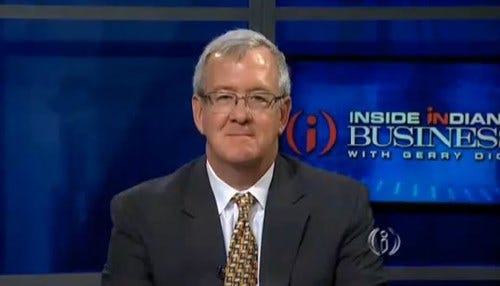State Unemployment Rate Dips Again
 Ball State Economist Mike Hicks co-authored the report.
Ball State Economist Mike Hicks co-authored the report.
Subscriber Benefit
As a subscriber you can listen to articles at work, in the car, or while you work out. Subscribe NowIndiana’s unemployment rate dropped to 4.5 percent in August, compared to 4.6 percent the previous month. The Indiana Department of Workforce Development says the state set all-time highs in total labor force and total number of employed people last month. Ball State University economist Mike Hicks says, for the long term, Indiana’s biggest problems include not having enough people moving to the state to take advantage of its business climate and not having the educated work force that would grow the economy even further.
The DWD says Indiana’s labor force grew by more than 3,500 last month, bringing the state to a record total of 3,379,290. Private sector employment also grew by 5,600 with the stat’s total number of employed people standing at 3,226,385.
"Indiana’s employment and labor force sit at record highs and its labor force participation rate outpaces the nation by nearly three percent, however, significant gains are still achievable to reach our workforce potential as a state," said Steven Braun, commissioner of the Indiana Department of Workforce Development. "As we move forward, it remains essential for DWD, WorkOne and community partners to continue all efforts to locate and train those who are not actively participating in Indiana’s workforce."
"Obviously, we have very strong higher education," said Hicks. "I think the real problem is transitioning those 25,000 kids each year who graduate from high school but don’t have any sort of post-secondary plans. They tend to work at much lower rates than people who have been to college. They tend to make a lot less money and they tend to stay in the state so it’s really an investment in getting them educated I think is the deep challenge that we have."
The highest growth sectors in Indiana for August were professional and business services, leisure and hospitality and financial services. Sectors including construction, manufacturing, private education and health services and trade, transportation and utilities reported losses last month.
Hicks says Indiana is likely to become a better place for middle-class workers over the next year or two in terms of wages. "I do think that these good job numbers suggest that we’re going to start seeing some wage increases, particularly in the middle-skill jobs that are really hard to fill, such as manufacturing, professional services and even healthcare."
Indiana now joins Michigan with the lowest unemployment rate of the surrounding states at 4.5 percent. The national unemployment rate remained steady at 4.9 percent. You can find more information on the August employment report by clicking here.
Ball State Economist Mike Hicks says Indiana’s high labor force participation rate is very good news.
